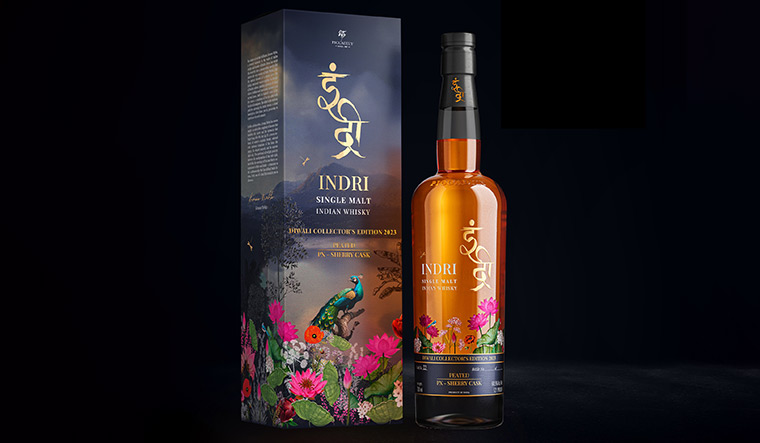Indri Diwali Edition 2023 winning the ‘Best in Show, Double Gold’ at the Whiskies of the World Awards has created that much-needed chatter within the whisky community―not only in India, but worldwide. As an industry observer, this is a great sign as the recognition that international forums are bestowing upon Indian whisky, particularly single malts, is coming in waves rather than being a flash in the pan. This phenomenon started with Amrut in the late 1990s, which was followed by Paul John in the early and mid-2000s. Rampur captured attention later in the decade and now Piccadily Agro has been establishing itself as a strong contender with some very well-made whiskies. The Indri Trini single malt was a great entry to the portfolio from the producer. This is a whisky with a profile that appealed to many aficionados whose personal preference of flavours in whisky ranged from peated to sherry. Having launched this version of whisky in India for the producer, I can reaffirm this preference from the audience first-hand.
So, what’s all the noise about this new release? The Indri Diwali Edition 2023 is a limited edition released for Diwali and is a whisky fully matured in a Sherry PX cask, with peated barley.
On the nose, the whisky has a rich sweetness of the PX cask with underlying wood and herbals. Chocolate, but not milk or sweet chocolate. A myriad of notes right from eucalyptus to old dusty cupboards. Pipe tobacco with all that richness and dampness that comes along with it. Date syrup and cedars.
The palate notes start from a sweet caramel and toffee to a flash bang of pepper heat, followed by luscious bitters which are herbal, spicy, and have multiple flavours. The dryness of a well-aged sherry, the freshness of meswak (yes, exactly that), and a dash of all the spices that go into it. The finish is long with the dryness of the wine bordering the transition into a heavier spirit. A dash of water opens up the spirit with a lingering scent of an old sandalwood jewellery box.
Why are Indian whiskies doing so well abroad and what are they doing right?
As I keep quoting multiple times, this recognition is not a result of a poker card game, or something that has occurred by chance. It is a well-planned and executed strategy that needs significant effort, resources and time.
The first attribute that I would recognise would be the growing confidence of the manufacturers; a significant number of them genuinely believe that the spirits they produce are on par or sometimes superior to the whiskies that are being produced in Scotland or other parts of the globe. This confidence comes from the foundations of adapting whisky-producing techniques conducive to the geography and making the best of the accelerated maturation that the tropical weather of India offers. This alone would not make the product click without the stringent quality control and discipline of these producers.
Indian whisky is now being recognised as a segment thanks to some glowing reviews by critics and consistent performance at world competitions. If I were to attribute the final recognition point, it would be the fact that whisky enthusiasts from India are now slowly but steadily reaching out to these single malts as against the age-old habit of picking one from Scotland. In my mind, there cannot be a bigger testimonial than this!
Rao is founder of Single Malt Amateur Club.


